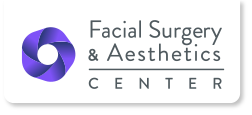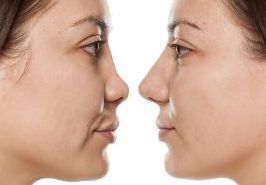
Dr. Menachof, MD, FACS has performed thousands of facial plastic surgery procedures in over 20 years of experience. He has been recognized as a Fellow by multiple academies, named one of America’s Top Facial Plastic Surgeons continually since 2003 and is featured in multiple national publications.
Do you have what some call a “droopy nose,” where the tip of the nose naturally points downward or droops when you smile? A drooping nose is also called nasal tip ptosis, which can be present from birth or the result of a previous rhinoplasty. If you have a droopy nose tip when smiling or a droopy nasal tip at rest, you are a candidate for a nasal tip rotation. Nasal tip rotation is a surgical procedure where the tip of the nose can be adjusted to a more desirable angle.
Keep in mind that nasal tip rotation refers to an intentional upward tipping of the nose, increasing the angle between the upper lip and the bottom edge of the nose. Decreasing this angle would be considered a nasal tip derotation, the reverse procedure of a nasal tip rotation.
Causes of Droopy Nose
Nasal tip ptosis, also called a drooping nose tip, can occur for a variety of reasons:
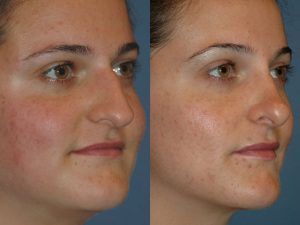
- Elongated lower lateral or upper lateral cartilages
- Elongated nasal septum or nasal bridge
- Aging-related drooping due to gravity, weakened tip support and thinning nasal skin (like facial sagging)
- Previous nasal tip surgeries that weaken support for the nasal tip
- Shape and size of lower lateral cartilage; excess cartilage can cause a nose tip to droop
- Weak attachments between septum and upper lateral cartilage
- Accidental ptosis through traumatic deformation
No matter the cause of your drooping nasal tip, it’s a good idea to consult with your surgeon to see if a nasal tip correction is the best solution for you. If you are experiencing breathing problems due to a drooping nasal tip, droopy nose correction through either rhinoplasty or nasal tip plasty may be a viable solution for helping you breathe easier once again.
How to Measure Nasal Tip Rotation
I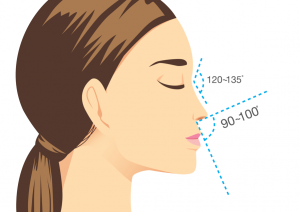 f you have the drooping nose tip and would like it corrected, the first step is choosing a quality surgeon for a nasal tip consultation. The surgeon will measure the nasolabial angle, which is the angle formed between the bottom edge of the nose and the upper lip.
f you have the drooping nose tip and would like it corrected, the first step is choosing a quality surgeon for a nasal tip consultation. The surgeon will measure the nasolabial angle, which is the angle formed between the bottom edge of the nose and the upper lip.
There are different desirable nasolabial angle ranges for men and women. The golden window for men is usually between 90 and 100 degrees, while a slightly more rotated tip is the often preferred look for women between 95 and 108 degrees. A surgeon will always diagnose nasal tip ptosis by measuring the nasolabial angle before surgical correction, so the post-operation angle measurement verifies a successful nasal tip rotation.
The Nasal Tip Rotation Procedure
In order to correct nasal tip ptosis, the surgeon performs what is called a nasal tip rotation, adjusting the nasolabial angle to the desired window. There are a variety of ways to perform a nasal tip rotation through rhinoplasty or nasal tip plasty.
Droopy Nose Rhinoplasty Procedure
Your surgeon can use a number of surgical techniques to perform nasal tip rotation, or nose tip lift, via rhinoplasty. Surgeons often use an open rhinoplasty technique for this procedure as opposed to a closed rhinoplasty. Open rhinoplasties feature incisions on the interior of the nose as well as the exterior of the nose along its bottom edge.
Surgical solutions for nasal tip ptosis include:
- Trimming excess cartilage from nasal tip
- Shortening of nasal septum
- Reduce length of lateral cartilages on the outer edge of each nostril, raising the “tripod” of the nose
- Suturing lower lateral cartilages to perform tip lift
- Increasing support of nasal tip through graft or columella strut (the columella is the bottom edge of the nose connecting the two nostrils)
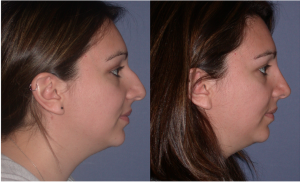 The style of tip rotation used by a surgeon is completely dependent on each individual nose. Some drooping noses may require more complex surgical correction with a combination of the above procedures, while others may be fixed more simply. Always consult with your doctor to determine which solution best fits your nasal needs. Now that you know some of the different avenues surgeons take for nasal tip rotation, be sure to ask your surgeon about his or her experience with nasal tip correction and discuss their preferred method for surgery. Browse through before and after photos of your surgeon’s rhinoplasty work to see finished results of previous nasal tip corrections. Additionally, verify that your surgeon is board-certified and has a high volume of previous rhinoplasty experience.
The style of tip rotation used by a surgeon is completely dependent on each individual nose. Some drooping noses may require more complex surgical correction with a combination of the above procedures, while others may be fixed more simply. Always consult with your doctor to determine which solution best fits your nasal needs. Now that you know some of the different avenues surgeons take for nasal tip rotation, be sure to ask your surgeon about his or her experience with nasal tip correction and discuss their preferred method for surgery. Browse through before and after photos of your surgeon’s rhinoplasty work to see finished results of previous nasal tip corrections. Additionally, verify that your surgeon is board-certified and has a high volume of previous rhinoplasty experience.
Fixing a nasal tip ptosis through droopy nose correction surgery can cost anywhere from $4,000 to $6,000. As always, consult with your surgeon about the droopy nose rhinoplasty cost for your specific case. Each droopy nose and nasal tip rotation procedure is unique.
If you have a droopy nose tip as a result of a previous rhinoplasty, you may be a candidate for revision rhinoplasty. Speak with an experienced surgeon to discuss options to fix your specific nasal tip and nose shape concerns.
This blog was originally posted in March 2019 and has been reposted in 2020 with updated information.
